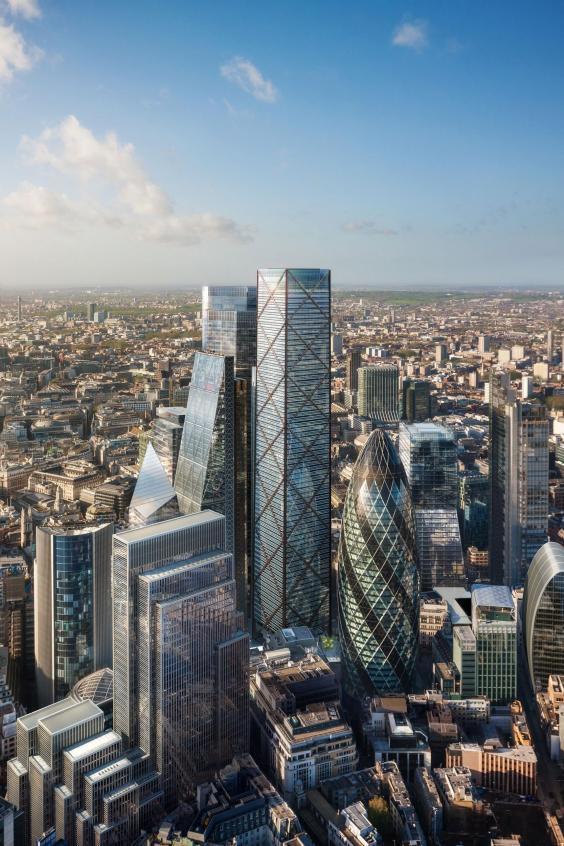What's missing from this view from St Paul's?

It's the Gherkin. The iconic skyscraper, once so dominant on the skyline, is in danger of disappearing forever.
The image above is an artist's impression of how the City of London will look in a couple of years. It's hard to believe that, only a few years ago, skyline views were dominated by the Gherkin.

When it opened in 2004, the curvy skyscraper was the second tallest building in the Square Mile. Only Tower 42 overshadowed it, and only by three metres.
Since then, several lofty neighbours have moved in. The Heron Tower and the Cheesegrater are both around 50 metres taller, blocking views from the southwest and northwest. Towers under construction such as the Scalpel and 100 Bishopsgate will further obfuscate. But the real Gherkin-killer is the towering 22 Bishopsgate, the blocky edifice that will replace the failed Pinnacle scheme. It's the tallest structure in our photo of City Centre's model below:

And, as this view shows, it will complete a horseshoe of tall buildings around the once proud Gherkin:

The above views show mostly buildings that are currently under construction. Also on the cards is the mighty 1 Undershaft, which would almost compare in height with the Shard. It's the sleek oblong in the image below, slotting into the skyline like a Tetris piece.

Taken together, these new towers will block most views of the Gherkin from the west. But its place on the skyline is also troubled by developments to the south and north.
Views from London Bridge, for example, are already obscured by the so-called Walkie Talkie building. The completion of the bulky 40 Leadenhall skyscraper (pictured below, and in the foreground of the image above), as well as the Scalpel will further get in the way.

And to the north, the unstoppable march of the City into Shoreditch also threatens to conceal the Gherkin. Developments like the Principal Tower, the Stage and Bishopsgate Goodsyard will add a new wall of glass when viewed from this direction.

It's only really to the east that clear, unobstructed views of the Gherkin will remain common. But even here, the massive ongoing redevelopment of Aldgate, coupled with midrise plans for Whitechapel will further restrict sightlines. By 2025, the Gherkin may only be visible from a handful of locations.
Should we care?
We think so. The Gherkin holds a special place in London's architectural history. It was the Square Mile's first tall building for 20 years. Whether you love or loathe skyscrapers, it was the Gherkin that led the way for the countless towers that now threaten its roofline.

But it wasn't just the first of a new breed; it was also the best. Despite initial opposition and comparisons to a sex toy, the shapely tower soon won the affections of Londoners like no skyscraper before or since. The Gherkin joined the London Eye and Tate Modern as a 21st century icon for London.
It also has impeccable environmental credentials, including a unique system of natural ventilation. 100 years from now, when someone is writing a book on the history of green architecture, the Gherkin will figure prominently.
The dome of St Paul's Cathedral — itself the tallest building in London for much of its history — can still be picked out from the crowd thanks to protected sightlines or viewing corridors along which tall intruders are forbidden. The Cheesegrater and Scalpel towers lean backwards to avoid one of these sightlines.
Is it time to consider similar restrictions to safeguard views of the Gherkin? If not, one of London's most distinctive buildings will soon become all but invisible.




